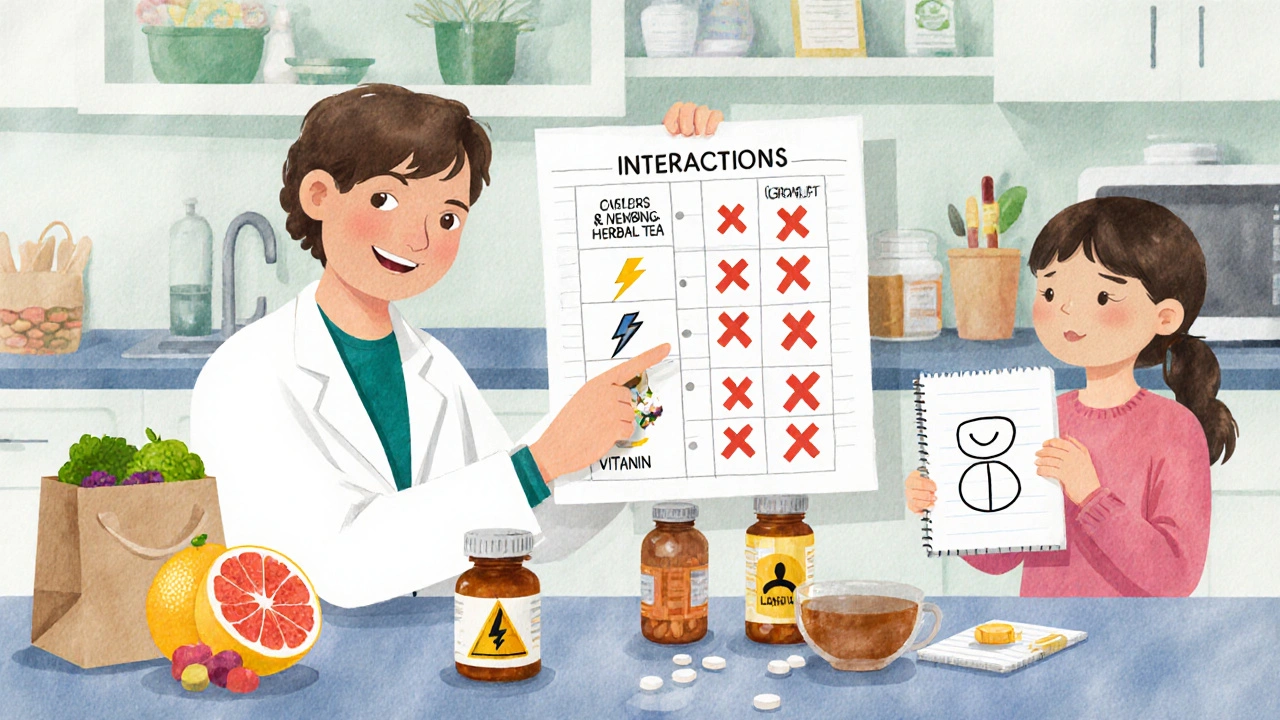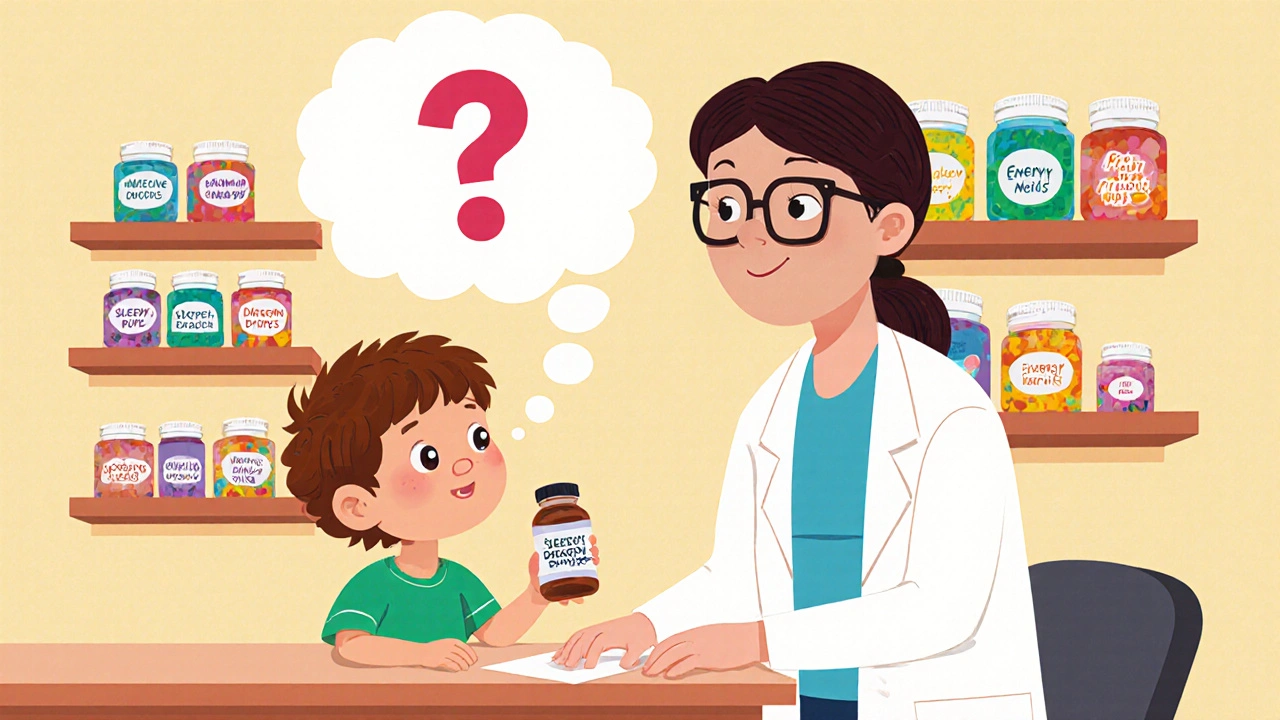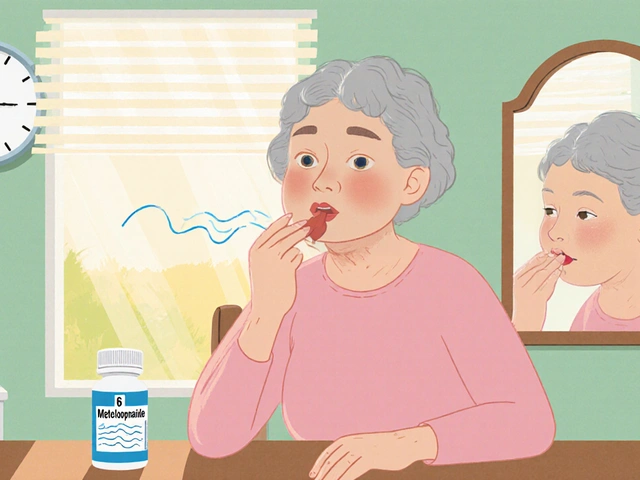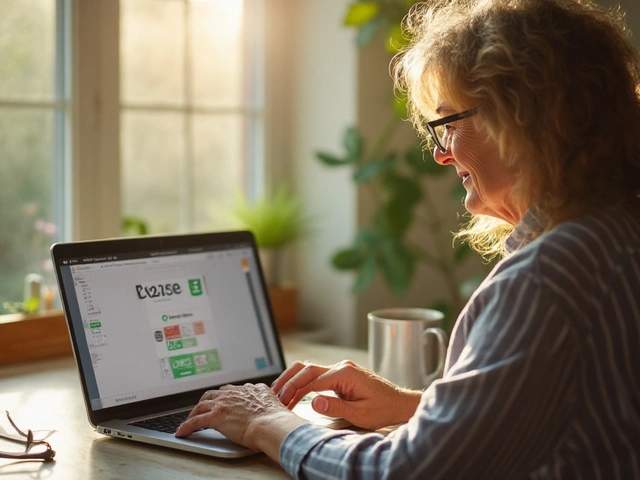Every year, over 1.5 million people in the U.S. are harmed by medication errors. Many of these mistakes happen not because of bad science or faulty prescriptions, but because patients didn’t ask the right questions at the pharmacy counter. You’re not alone if you’ve ever walked out with a new prescription, nodded along to the pharmacist’s instructions, and then later realized you weren’t sure how to take it - or what could go wrong. The truth is, pharmacists are trained to catch dangerous mistakes, but they can’t help you if you don’t speak up.
What is this medication used for?
This seems obvious, but it’s one of the most overlooked questions. You might know why your doctor prescribed it, but do you really understand what it’s supposed to do? For example, if you’re given a pill labeled "hydrochlorothiazide," you might assume it’s for high blood pressure - and you’d be right. But if you’re told it’s for "fluid retention," you might not realize it’s the same drug. Some medications have multiple uses. A statin might be prescribed for cholesterol, but it could also be used to reduce inflammation in certain autoimmune conditions. Knowing the exact purpose helps you recognize if something’s off. If you start taking it and feel worse instead of better, you’ll know whether to call your doctor or just wait it out.
How and when should I take this medication?
"Take one by mouth twice daily" sounds simple - until you realize your doctor meant morning and evening, but the pharmacist said "every 12 hours," and you’ve been taking it at breakfast and bedtime instead. Timing matters. Some meds need to be taken on an empty stomach. Others must be taken with food to avoid nausea or to help absorption. Antibiotics like doxycycline can cause serious stomach irritation if taken without food. Blood pressure pills often work best when taken in the morning to match your body’s natural rhythm. And don’t forget about missed doses. If you forget one, should you take it right away? Wait until your next scheduled time? Double up? Each drug has a different rule. Ask for clarity. Write it down. Or better yet, ask if you can repeat the instructions back to make sure you got it right. Studies show this "teach-back" method cuts confusion by over 30%.
What side effects should I expect - and which ones mean I need to call a doctor?
Not every weird feeling means something’s wrong. But some side effects are red flags. Common ones like mild dizziness or dry mouth are usually harmless. But if you’re on blood thinners like warfarin and notice unusual bruising, nosebleeds, or dark stools, that’s not normal. If you’re taking a statin and feel sudden muscle pain or weakness, especially with fever, that could signal a rare but dangerous condition called rhabdomyolysis. Some medications can cause allergic reactions - swelling of the face, throat, or tongue - which need emergency care. Others, like certain antidepressants or painkillers, can cause suicidal thoughts in younger adults. Ask the pharmacist: "Which side effects are normal? Which ones are dangerous?" Don’t assume you’ll know the difference. Many patients wait days before calling their doctor, thinking it’s "just part of the process." That delay can be deadly.
Does this interact with my other medications, supplements, or food?
You’re probably not just taking one pill. You might have a blood pressure med, a daily aspirin, a vitamin D supplement, and an herbal tea for sleep. All of these can clash. Ibuprofen and warfarin? That combo increases your risk of internal bleeding by 40-60%. Grapefruit juice can make cholesterol drugs like simvastatin dangerously strong - enough to cause muscle damage. St. John’s wort can make birth control pills fail or reduce the effect of antidepressants. Even over-the-counter cold meds can contain hidden ingredients like pseudoephedrine that raise your blood pressure if you’re already on a beta-blocker. Bring a list - or better yet, bring all your bottles. Pharmacists see this every day. They’ve caught interactions that doctors missed because they didn’t know about the herbal tea or the magnesium supplement you take for leg cramps. Don’t assume your doctor knows everything you’re taking. Your pharmacist does.

Is there any ingredient that might cause an allergic reaction?
Most people think of penicillin or shellfish when they think of allergies. But medication allergies can come from dyes, fillers, or inactive ingredients. Red dye #40, lactose, or even cornstarch can trigger reactions in sensitive people. If you’ve ever broken out in hives after taking a pill, even if you didn’t know why, tell your pharmacist. They can check the exact formulation. One patient in Pennsylvania discovered her rash from a generic version of her thyroid med was caused by a dye not in the brand-name version. She switched back - and the rash vanished. Pharmacists have access to the full ingredient list. You don’t. And if you’ve had a reaction before, don’t assume it won’t happen again. The same ingredient can be in different brands, even if the name is different.
How should I store this medication properly?
Not all pills belong in the bathroom cabinet. Heat, moisture, and light can ruin them. Insulin, for example, loses effectiveness if left in a hot car or a glove compartment. Antibiotics like amoxicillin suspension can spoil in just a few days if not refrigerated. Some pills become toxic when exposed to humidity - like nitroglycerin, which can turn useless if stored in a steamy bathroom. And don’t forget about children. If you’re storing painkillers or sedatives in a drawer, make sure it’s locked. The CDC reports that over 60,000 children are treated each year for accidental medication poisoning. Ask: "Should this be kept in the fridge? Out of sunlight? Away from kids?" And if you’re traveling, ask if it’s safe to pack it in your checked luggage. One patient’s asthma inhaler froze solid in a cold suitcase and didn’t work when she needed it.
May I repeat back what you just told me?
This isn’t just a nice thing to do - it’s a proven safety tool. When patients repeat instructions back, pharmacists catch misunderstandings in real time. One study found this simple step reduced medication errors by 31%. Say it out loud: "So, I take this pill every morning with food, not at night, and if I get dizzy or see spots in my vision, I should call right away?" If the pharmacist says, "Actually, it’s without food," you’ve just prevented a mistake. Don’t feel silly. Pharmacists love it when patients do this. It means you’re engaged. And in a busy pharmacy, that’s rare.
What if I need to stop this medication?
Sometimes, you’ll be told to taper off - not just quit. Stopping certain antidepressants, blood pressure meds, or seizure drugs suddenly can cause withdrawal, spikes in blood pressure, or even seizures. Even some over-the-counter sleep aids can cause rebound insomnia. Ask: "Do I need to slowly reduce this?" and "What happens if I stop too fast?" If your doctor says you don’t need it anymore, confirm with your pharmacist whether the stop order is clear and safe. Sometimes, old prescriptions linger in systems, and patients accidentally refill them months later.
Can I get a printed list of all my medications?
Most pharmacies can print you a current list - including prescriptions, OTC drugs, vitamins, and supplements. Keep this in your wallet or phone. It’s invaluable if you’re rushed to the ER, see a new doctor, or get hospitalized. Studies show that over half of hospital admissions involve medication errors because staff didn’t know what the patient was really taking. A printed list cuts that risk dramatically. Ask for it every time you pick up a new prescription. Update it whenever something changes.
Why does this look different from last time?
Generic drugs look different every time. That’s normal. But if the shape, color, or markings don’t match what you’ve taken before - even if the name is the same - stop and ask. The Institute for Safe Medication Practices says 18% of dispensing errors happen because the pill looks wrong, and patients don’t question it. One woman took what she thought was her blood pressure pill - but it was actually a diabetes drug. She didn’t realize until she felt faint. Always check the label. Compare the pill to your last bottle. If it looks off, say something. It’s not being difficult - it’s being smart.





14 Comments
luke young
Just got back from the pharmacy today and used the teach-back thing they mentioned. The pharmacist actually smiled and said, "Finally, someone who actually listens." Felt good to not feel like a dumbass for asking.
james lucas
man i cant tell you how many times i’ve walked out with a script and then 3 hours later realized i had no clue how to take it. last week i got some new blood pressure med and i just assumed "twice a day" meant morning and night but turns out it was supposed to be 12 hours apart and i was taking it at breakfast and bedtime which is like 14 hours apart and my bp was all over the place. i called the pharmacy and they were like ohhhhh yeah we should’ve clarified that. i just nodded like i knew what i was doing. dumb. so now i write everything down on my phone and repeat it back. also i started bringing all my bottles in like a hoarder with a pharmacy pass. it’s embarrassing but worth it.
Ravi Kumar Gupta
In India, we don’t even get this level of attention. My pharmacist once handed me a pill and said, "Take one, it will fix everything." No questions asked. No side effects explained. No interaction check. I once took a painkiller with my chai and ended up in the ER because it had caffeine and my heart went nuts. Here, pharmacists are trained professionals. In my country, they’re just people behind the counter with a degree. I wish we had this culture of asking. You’re lucky.
Rahul Kanakarajan
Why are people so lazy? You pay $150 for a pill and you don’t even ask what it does? You think your doctor is a wizard? You think the pharmacist is your butler? I had a friend take metformin for weight loss because his cousin said it worked. He ended up with lactic acidosis. He didn’t even know it was for diabetes. You’re not a victim of bad medicine-you’re a victim of your own ignorance. Stop being passive. Ask. Or don’t take the damn pill.
New Yorkers
It’s not just about asking questions-it’s about reclaiming your autonomy in a system that treats you like a walking prescription label. We’ve outsourced our health to corporate pharmacies and overworked doctors who have 7 minutes per patient. This list isn’t advice-it’s a revolution. The pharmacy counter is the last democratic space where you still have a voice. Use it. Or die quietly like the rest of them.
David Cunningham
Been doing the bottle-bringing thing for years. My pharmacist knows me by name now. She even remembers when I switched from generic to brand-name because the filler made my stomach feel like it was full of marbles. She’s basically my health therapist. Also, grapefruit juice is a trap. Don’t do it. Ever.
Jessica Correa
i used to be scared to ask questions cause i thought theyd think i was annoying but honestly every single time theyre like oh good you asked that because so many people dont and then they give me extra tips like dont crush the pill or store it in the car in summer. i wish i knew this sooner
manish chaturvedi
As a pharmacist in India, I can confirm that the system here lacks the infrastructure to support such patient engagement. We often have to dispense 100+ prescriptions a day. The question you ask-"What is this for?"-is a luxury most of us cannot afford. But I encourage every patient reading this: if you can, bring a list. If you can, ask. Even one question changes outcomes. I’ve saved lives with a simple "Have you taken this before?"
Nikhil Chaurasia
I once had a reaction to a dye in a generic pill and didn’t say anything because I didn’t want to seem difficult. Then I got the same thing again two months later. Same rash. Same shame. I finally asked the pharmacist about it and she checked the ingredients-turns out the new generic had the same dye. I switched brands. I wish I’d spoken up sooner. You’re not being difficult. You’re being responsible.
Holly Schumacher
Let’s be real: 90% of people who don’t ask questions are also the ones who Google symptoms at 3 a.m. and then show up at the ER demanding antibiotics for a cold. If you can’t ask a pharmacist what a pill does, you shouldn’t be allowed to take it. Also, the "teach-back" method? That’s not cute. That’s basic medical literacy. If you need to be told to repeat instructions back, you’re not ready to be an adult with a prescription.
Michael Fitzpatrick
Just wanted to say this post made me feel less alone. I’ve been asking these questions for years and people think I’m weird. My mom says "just take the pill, it’s fine." But last month I caught a drug interaction between my thyroid med and my magnesium supplement-pharmacist said if I hadn’t asked, I could’ve had a serious heart rhythm issue. So yeah, I’m the annoying guy who brings his whole medicine cabinet. And I’m proud of it.
Shawn Daughhetee
my grandma died because she took her blood thinner with grapefruit juice and no one told her. i didnt know either. i wish someone had just told me this stuff before it was too late. now i ask every time. even if it feels dumb. better safe than sorry
Justin Daniel
lol at the people who think asking questions is "being difficult." bro, the pharmacist gets paid to answer questions. if you don’t ask, you’re the one wasting their time by showing up confused, then coming back a week later with an ER bill. also-yes, your pill looks different. yes, you should ask. no, you’re not being paranoid. yes, the pharmacy made a mistake once. it happens. you’re not a burden. you’re the reason they don’t kill people.
Melvina Zelee
you know what saved me? writing down the instructions in my own words. like i told my friend "so this pill is for my anxiety but it also makes me sleepy so i gotta take it at night and if i feel like my tongue is swelling i call 911 not my mom" and then i showed it to the pharmacist and she was like wow you get it. i felt like a genius. also i keep my med list on my lock screen. its my emergency contact now